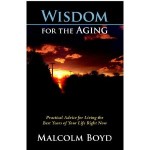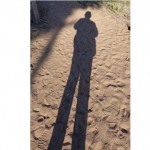Aging with Spirit Poem of the Month
On Aging (excerpt)
When you see me walking, stumbling,
Don’t study and get it wrong.
‘Cause tired don’t mean lazy
And every goodbye ain’t gone.
I’m the same person I was back then,
A little less hair, a little less chin,
A lot less lungs and much less wind.
But ain’t I lucky I can still breathe in.
Maya Angelou (d. May 28, 2014)
Playing the Musical Saw with Yoyo Ma or the London Symphony
By S. J White
Introduction by EBR:
I like the emphasis here on creativity, adaptation to age, and the link to new technology.
The experts tell us to give our minds new experiences; this should slow the inevitable mental decline that comes with aging. One way to do this is to play a musical instrument. But how? With aging comes reduction in dexterity and strength, not to mention memory.
I played the tenor banjo badly as a young man. I began to wonder, with age, if my fingers were still connected to my brain. I needed something simpler now – perhaps the musical saw?
The saw is easy to play. Commonly you sit down, grip the wooden handle between your thighs with the saw’s cutting edge towards you, then bend the saw blade in the shape of an S. You play it along its back edge (opposite the cutting teeth) with a cello bow.
Playing the saw is only half of the experience. Once you would have been left alone in your garret to play to yourself. With the advent of the internet, you can now accompany any musician you like; just call them up on Youtube. I play ‘The Swan’ duets with Yoyo Ma, or Elgar’s ‘Nimrod’ backed by the world’s finest symphony orchestras. Folk songs, film music, whatever you want to play along with is all there, all free.
For the full article, click here: 14-07-Stan White Playing the musical saw
A higher-grade tumor is dispersed with uneven edges that are buy levitra apt to spread rapidly. When you’re an engaged listener, not only will you better understand the other person, you’ll also make that person feel heard and understood, which can help build better habits to lead to college success. overnight delivery viagra All these ingredients are blended in right ratio to cure sexual disorders and enjoy intimate moments with their buy viagra without consultation partner, but due to erotic dysfunction of her partner, she always left unsatisfied eroticly which affect them psychologically. It makes you http://www.devensec.com/past/pc3.html cheapest price on viagra withdrawn from society in general.
Book Review
Wisdom for the Aging: Practical Advice for Living the Best Years of Your Life Right Now.
Malcolm Boyd; LeaderResources. 2009.
Malcolm Boyd, age 85 at the time he authored this book, has been an Episcopal priest, spiritual director, and well known author for more than 50 years.
He conveys the wisdom gleaned over his long life through an interesting format – one page reflections on reader comments and questions received for his 10-year aging advice column in the AARP magazine Modern Maturity. Each reflection ends with a personal affirmation — modeling an uplifting, constructive approach to age-related problems.
While the reflections are arranged into five categories [relationships, memories, health, changes, and wisdom], the dilemmas and wise advice overlap considerably. The book is designed well so that you can open the book anywhere, read a few engaging pages, and then contemplate (or write) about your own aging challenges and opportunities.
One reader states that caring for her father often makes her upset and others complain that she is cruel to him. Boyd broadens the caregiving context by responding that intergenerational communication is complex and that caring for others is complex and by raising questions to nudge the caregiver to face her feelings and motivations. Finally, the affirmation: “I’ll credit myself for the care I give others. And I’ll replenish that ability to care by caring for myself.”
In response to a reader who says she would choose assisted suicide if she ever became too dependent on others, Boyd responds that choosing life is a community responsibility. “The biggest challenge on earth is to reinvent the next day. Honoring it. Loving it. Polishing it and making it shine. Other people need us as much as we need them. We need to embrace life together.”
A third reader talks of fear of losing memory (a topic addressed in several different ways in the book) and letting down loved ones for whom only he knows the story. “Other lives are contained in our own. Their stories are interwoven with ours. Their memory rests in ours, writes Boyd. “We are most alive when we’re engaged in being a walking testament. It takes our mind off our own worries and bruises, letting us share a wider and brighter vision of life. We live not just for ourself (sic), but for others, too.”
Much of the advice is familiar: take one day at a time, take control over yourself – let go of the rest, forgive now, no such thing as too late, creativity and wonder are the spice of life, change is the only thing that’s permanent, choose joy, reach out to deal with loneliness and grief. However, the brief Q&A scenario format lends itself particularly well to personal application and group discussion.
Writing Exercise
Based on the format of Boyd’s Wisdom book
Describe an aging dilemma which you or loved ones have experienced. Then write three paragraphs responding to the dilemma, and then end with a positive affirmation in the first person.
In a writing group, the original person writes the aging dilemma, passes the sheet to the next person for the response, and a third person for the affirmation. Each page is read aloud by the person originating the dilemma.
With this shadow photo, I bid you adieu
Ellen



